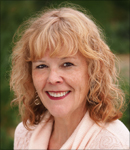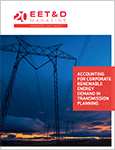 Since joining EE T&D last April as editor in chief, I have had the pleasure of interacting with dozens of industry partners and subject matter experts, but I have met only a handful of them in person. So when it came time to prepare for DistribuTECH 2018, I was delighted at the prospect of meeting many of these people in real life, learning more first-hand about their role in the power sector and exploring more about what they consider to be the most pressing or thought-provoking topics. With more than 500 exhibitors and thousands of conference attendees at DTECH, it was clear I would not be able to speak to all of those on my list. I did not realize how tight everyone’s schedules would be.
Since joining EE T&D last April as editor in chief, I have had the pleasure of interacting with dozens of industry partners and subject matter experts, but I have met only a handful of them in person. So when it came time to prepare for DistribuTECH 2018, I was delighted at the prospect of meeting many of these people in real life, learning more first-hand about their role in the power sector and exploring more about what they consider to be the most pressing or thought-provoking topics. With more than 500 exhibitors and thousands of conference attendees at DTECH, it was clear I would not be able to speak to all of those on my list. I did not realize how tight everyone’s schedules would be.
As the EE T&D team entered the exhibit hall on Monday afternoon to drop off copies of our magazine and to set up our display, we were greeted by the shouting of various setup crews, as they strained be heard over the cacophony of hammers, forklifts and staple guns. There were countless piles of boxes and booth parts everywhere, and from the state of incompletion, it looked like it would be a long shot for the place to be set up by the time the exhibit hall opened the next morning. In spite of the pandemonium during the setup, and regardless of what looked like down-to-the-wire scrambling, when it came time for the doors to the exhibit hall to open on Tuesday, everyone and everything was in place and ready to go.
Included in the 15 conference tracks was one on microgrids. Microgrids are not new to the industry, but today, as more utilities and energy partners are looking to microgrids to bolster grid stability and resiliency, the conversation about what microgrids are and the potential they offer the market has become mainstream.
As a concept, microgrids make sense, but for conference attendees who wanted to gain an understanding of how they actually work, S&C Electric Company had an interactive, three-dimensional microgrid table on display. Not only was the microgrid table an effective tool to explain a rather complex process, but the accompanying sound effects also made for an entertaining demonstration. With thousands of individuals browsing the exhibitor floor S&C was successful at capturing and holding the attention of passers-by.
Of course, S&C was not the only exhibitor to draw a crowd by offering visually compelling displays and informative demonstrations. Delta Energy and Communications used a model of a miniature town to showcase the company’s approach to smart city infrastructure through its smart grid network solution. The model demonstrated how a smart grid network, utilizing a Wi-Fi based WWAN (wireless wide area network) mesh with power metering hardware and software, can effectively deliver electrical distribution monitoring and analytics within a secure, cloud-based network. In a large space, where many conversations are occurring at once, it was challenging at times to follow along when exhibitors talked about their offerings. Simulations like Delta’s
model and S&C’s demo made it easier to focus, so that I came away from our conversations with a better understanding of how these companies were addressing some of the industry’s most significant challenges.
Sensus was another exhibitor whose notable demo garnered an enthusiastic reception from conference attendees, as well as repeat visitors, to its booth. Guests of the Sensus booth were encouraged to participate in a “fully immersive virtual reality experience,” where they found themselves inside a virtual reality of network communication that presented real disruptions for them to battle. I had considered donning the special virtual reality glasses and experience this for myself, but there were a few people in line ahead of me, and I had five minutes to get to a meeting on the other side of the exhibit hall. From what seemed like an ever-lengthening queue of participants wanting their turn at the game, I clearly missed out on an activity that was educational and fun.
I went to DistribuTECH with the intention of speaking with a number of established contacts, while also making new acquaintances. It was a great plan, but the 30 minutes allotted for each meeting made it difficult to do more than touch base with only about half of those on my list. Next year, I will be more realistic about scheduling meetings at DistribuTECH so that I can spend more time at each booth.
I am hoping the IEEE PES T&D conference this April in Denver will present another chance to meet more of my existing contacts. In the meantime, here is what I told those I met DTECH who are interested in submitting articles to EE T&D: The magazine strives to address the industry’s major issues and emerging trends, while also covering the projects or solutions transforming the industry. However, it is those who work in the energy sector every day who truly understand what matters most. If you feel EE T&D should cover a subject or industry trends, I hope that not only will you point it out but also if it is a topic on which you’re an expert, you will allow us to share that valuable expertise with our readers.
If you would like to contribute an article or if you have an idea about interesting technology, solutions, or suggestions, please email me at Elisabeth@ElectricEnergyOnline.com.
Elisabeth







